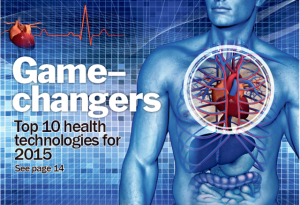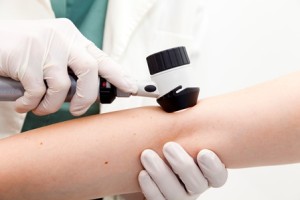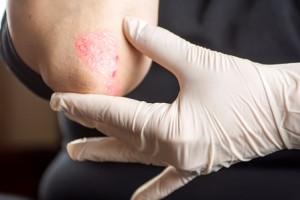 With so many emerging drugs, medical devices, and procedures coming to market, how can health professionals, administrators, and patients identify the ones that could truly have a significant impact in Canada?
With so many emerging drugs, medical devices, and procedures coming to market, how can health professionals, administrators, and patients identify the ones that could truly have a significant impact in Canada?
That’s where the Canadian Network for Environmental Scanning in Health (CNESH) comes in. For the second consecutive year CNESH, along with a panel of clinical experts, have been working to identify which new and emerging health technologies hold the greatest promise to improve both the lives of patients and the delivery of health care.
The 2015 Top 10 New and Emerging Health Technology Watch List includes five emerging drugs and five innovative medical devices.
“Every day we read sensational stories about the promise of new health technologies and wonder if they will really make a difference to our health or the health care system,” said Rosmin Esmail, Chair of CNESH and Director of Health Technology Assessment and Adoption at Alberta Health Services. “But CNESH cuts through the hype and creates a list, based on evidence, which can help decision-makers plan for the future when it comes to new and emerging technologies.”
MORE: THE ASSISTED DYING DEBATE
Health technologies were identified through a public call for nominations and the committee followed a rigorous prioritization process to arrive at the final list of 10 technologies.
So, what innovations should we be watching for in 2015?
Andexanet Alfa for Bleeding Episodes
An anticoagulant, often called a blood thinner, is a medication that is widely prescribed to help treat or prevent blood clots in the veins, arteries, lungs, or heart. For years warfarin has been the mainstay of anticoagulant therapy but three new oral anticoagulants are now available in Canada.
While these new drugs offer practical benefits, there is no treatment available to rapidly reverse the anticoagulant effect – something critically important to patients taking these drugs who may need emergency surgery or experience serious bleeding complications.
However, andexanet alfa (PRT064445) is a new treatment developed as an antidote to the new oral anticoagulants. The drug works by blocking the anticoagulation effect of the drugs and restoring the normal process that allows bleeding to stop.
The development of this drug is widely seen as an important innovation in the management of patients who are taking new oral anticoagulants. In the United States the Food and Drug Administration (FDA) designated the drug a ‘breakthrough therapy’ and ongoing studies continue to evaluate its safety and efficacy.
 Electrically stimulated underwear for pressure ulcers
Electrically stimulated underwear for pressure ulcers
Bedsores, also called pressure ulcers, are injuries to the skin and underlying tissue that are usually caused by lengthy and unrelieved pressure on the skin. They are painful for patients, can lead to serious infections, and cost the Canadian health care system approximately $3.5 billion a year, according to some experts.
For patients with limited mobility – including elderly patients confined to a bed and people with spinal cord injuries who use a wheelchair – pressure ulcers pose a serious health concern.
Common approaches to prevention include having caregivers regularly turn patients and the use of specialized mattresses, but a new type of electric underwear could help eliminate these painful injuries.
The underwear sends electrical pulses for 10 seconds every 10 minutes to areas of the body where bedsores occur (e.g., the buttocks and hips). The pulses mimic regular body movements that prevent constant pressure and help prevent bedsores.
The underwear, developed by the Project SMART team at Alberta Innovates Health Solutions, is not yet approved for sale in Canada, but in a recent experimental phase 2 study none of the 48 people who used the specialized underwear developed bedsores.
 Eravacycline antibiotic for multidrug-resistant infections
Eravacycline antibiotic for multidrug-resistant infections
Multidrug-resistant organisms (MDROs) are bacteria that are resistant to a variety of antimicrobial drugs, severely limiting treatment options. They are one of the biggest issues facing public health around the world.
The available treatment options include broad-spectrum antibiotics, but resistance to some medications in this class has already been reported in medical literature.
Eravacycline is a new antimicrobial medication from the tetracycline class of drugs that can be given intravenously or via pill. In clinical studies, it has shown antimicrobial activity against a wide range of bacteria, including those that are resistant to currently available antibiotics. It also seems to be effective at treating infections that are hard to treat with other new antibiotics.
Eravacycline can be given as a single treatment even before the diagnosis in acute life-threatening infections. And, because patients can switch from injection to pill form when they are clinically stable, it has the potential to reduce the length of hospital stays and the associated costs.
 Medication LCZ696 for heart failure
Medication LCZ696 for heart failure
Almost half a million Canadians live with heart failure, a disabling condition where their heart isn’t strong enough to pump blood as well as it should. The disease is a leading cause of death in Canada and is on the rise, as more patients survive heart attacks and live with chronic conditions that affect the heart such as diabetes or high blood pressure.
The standard treatment for heart failure has not changed in some time. It involves treatment with a combination of drugs and the goal is to improve symptoms and prevent the disease from progressing.
Medication LCZ696 is a new treatment that combines valsartan, an existing drug, with sacubitril, a new drug that works on a different pathway to increase naturally occurring molecules in the body that decrease blood pressure and the amount of work the heart needs to do. By combining the two drugs, the treatment helps manage heart failure in a way that could not be done by just giving sacubitril alone.
In a phase 3 clinical trial, patients with heart failure who received medication LCZ696 were found to be 20 per cent less likely to die from heart-related problems than those who received standard therapy. They were also hospitalized less for worsening heart failure compared to people on standard therapy. In March 2015 Health Canada granted the drug priority review due to its potential to offer significant clinical benefit.
Molecular breast imaging
Mammograms are widely used in breast cancer screening, but they are less useful for telling normal tissue apart from cancerous tissue in women with dense breasts.
A new type of imaging system may offer more useful information when used in combination with mammography in women with dense breasts or when mammography results don’t agree with physical findings (e.g., when a lump can be felt).
A breast-specific gamma camera is used to scan the breast tissue, but before the scan patients receive an injectable drug called a “tracer”. More of the tracer is absorbed by cancerous cells than by normal cells, so the breast cancer typically appears as darker spots in comparison with images of normal tissue.
This type of molecular breast imaging has shown moderately better performance in identifying cancer in women with dense breasts when used in combination with mammography compared with MRI. It is also generally a more comfortable procedure and image data are received within five to 10 minutes of the procedure.
Immunotherapy, considered by many to be a breakthrough in cancer care, is a treatment that works by stimulating the body’s natural immune system to fight the cancer. Nivolumab is emerging as an important new immunotherapy treatment for melanoma.
Melanoma is the most dangerous form of skin cancer and is one of the most frequently occurring cancers in Canada. When the cancer is diagnosed early, it can be cured by surgical removal. But if it spreads to other parts of the body, surgery may not be enough and treatment focuses on chemotherapy, radiation therapy, and immunotherapy to control the cancer.
Nivolumab is used to treat patients with inoperable or metastatic melanoma. It works by blocking a protein called “programmed cell death 1” (PD-1). PD-1 hides cancer cells and prevents them from being killed by the body’s immune system.
In a recent study, the cancer disappearance rate was significantly higher with nivolumab (7.6{c754d8f4a6af077a182a96e5a5e47e38ce50ff83c235579d09299c097124e52d}) than with dacarbazine (1{c754d8f4a6af077a182a96e5a5e47e38ce50ff83c235579d09299c097124e52d}), a type of chemotherapy drug, and the one-year mortality rate was 58 per cent lower in patients treated with nivolumab compared with those treated with chemotherapy.
Nivolumab is not yet available in Canada. In December 2014 the FDA approved the drug for advanced melanoma.
 Pediatric vision scanner for common eye disorders in pre-school children
Pediatric vision scanner for common eye disorders in pre-school children
Two of the most common vision disorders in preschool children are strabismus (misaligned eyes) and amblyopia (lazy eyes). Early diagnosis is key to correcting them, but if left undiagnosed they can affect a child’s development and even lead to vision loss.
Unfortunately, these vision disorders can be hard to diagnose using the screening tools available in a family doctor’s office and access to specialized screening programs varies greatly across Canada.
A new portable, hand-held pediatric vision scanner that quickly and accurately detects these disorders may significantly improve diagnosis. The device works by giving a “pass” or “refer” response, letting clinicians know if children should be referred for further testing or treatment. The device is easy to use in a regular office setting.
One published study showed that the vision scanner is better at diagnosing these eye disorders in young children than physical exams or another automated device. The scanner could also lower testing costs because results can be interpreted by non-specialists and make eye exams for children more accessible.
 Remote monitoring of cardiac devices
Remote monitoring of cardiac devices
More than 200,000 Canadians with heart conditions have a pacemaker or implantable cardioverter-defibrillator implanted inside their bodies to help manage their disease. But did you know that these medical devices also record data about how the heart is working? This vital information can then be used to inform treatment decisions.
Today, most patients with implanted heart devices visit a medical clinic for follow up by a heart specialist, where information from the device is transferred to a computer and any adjustments can be made
However, it is now possible for information from these cardiac devices to be monitored remotely and transferred from home to a heath care professional. A data transfer machine in the home receives information from the device and sends it to a central database, which then forwards the information to the clinician.
Remote monitoring technology has improved dramatically over the past few years and offers several advantages to patients and the health system. Physicians can be quickly alerted to problem with the heart device, meaning treatment decisions or adjustments can be made sooner. And remote monitoring could lead to fewer clinic visits, because information from the device is regularly sent to the health care team from home.
While some remote monitoring programs for cardiac devices currently exist across Canada, the technology has not been widely adopted yet and is still considered an emerging innovation.
Psoriasis is a chronic, inflammatory skin disease that causes itchy patches of thick, scaly, red skin and affects nearly one million Canadians. The disease can be long-lasting, with symptoms disappearing and reappearing regularly. For some it causes minor discomfort, but for others it limits daily activities and greatly affects self-esteem.
The standard treatments for psoriasis include creams and ointments, phototherapy (also called light therapy), and oral or injected medications. The choice of treatment depends on how severe the psoriasis is, treatment cost, and patient preference.
Secukinumab is a new injectable drug that treats moderate to severe psoriasis. It is part of a group of drugs called biologics, which are effective at controlling symptoms with fewer serious side effects. In two recent studies, patients receiving secukinumab had better results and symptoms that decrease more quickly compared to people treated with another biologic drug.
In March 2015 Health Canada approved secukinumab for the treatment of moderate to severe psoriasis for adults who are candidates for systemic therapy or phototherapy.
Every year approximately 30,000 Canadians are hospitalized due to sepsis, and more than one-third will die.
Sepsis is a serious, full-body response to an infection and it happens when toxins, produced by bacteria or other types of infection, that are released into the bloodstream and cause cells to release substances that initiate inflammation throughout the body. The inflammation can cause extremely low blood pressure and tiny clots in the bloodstream which, if left untreated, can severely damage vital organs and lead to death.
Toraymyxin is an external blood purification medical device that removes the endotoxin that causes sepsis from the bloodstream. The device works with a machine that draws blood out of a vein, purifies it of endotoxins, and delivers the purified blood back to the patient.
When compared with standard treatments, toraymyxin has been shown to reduce the 28-day mortality rate by more than 50 per cent. And studies have shown toraymyxin can improve blood flow and significantly lower rates of organ damage.
For more details about each of the health technologies included on the 2015 Top 10 New and Emerging Health Technology Watch List and a description of the methodology used to create the list, visit www.cadth.ca/cnesh. CADTH serves as the secretariat for CNESH.
The post What’s on the 2015 Top 10 List of Game-Changing Health Technologies? appeared first on Hospital News.
SOURCE: Hospital News – Read entire story here.










